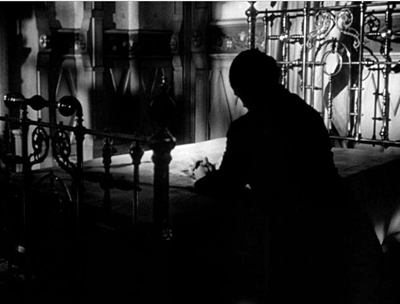

The particularities of the way Tarkington’s characters talk, as well as the cadences of the omniscient third-person narrator, were evidently essential to Welles’s conception of the film. What is most striking is Welles’s faithfulness to the novel’s language. Much as the novelist regrets the changes that befall the family, he also recognizes their inevitability. George’s blindness to the effects of his actions, Tarkington suggests, can be forgiven as the result of his upbringing he is finally the victim of that magnificence he has been raised to revere.

In the novel’s central drama-the successful effort of the spoiled young heir George Minafer to thwart his mother Isabel’s remarriage, to the industrialist Eugene Morgan-youthful pride struggles self-destructively to preserve a world and a set of values that have already disappeared. Tarkington must acknowledge that the decline of the Ambersons has as much to do with their own arrogance and shortsightedness as with economic transformations beyond their control, but his sympathies are with them as he describes how their privileged domain at the heart of the city is defiled by the dirt and unbreathable air of industrial pollution, and implicitly by the cruder values of interlopers and immigrants. The force of Ambersons is in its ambivalence. With the Pulitzer-Prize-winning The Magnificent Ambersons, he struck a more mournful and ambivalent note. Penrod (1914), his nostalgic sketches of an Indiana boyhood, had instantly become part of the culture. When Welles was an infant, Booth Tarkington had already memorialized the disappearance of that old-fashioned world in a 1918 novel, The Magnificent Ambersons-which Welles would film so stunningly in 1942-that was also a simmering polemic against the forces of industry and greed that had befouled the one he grew up in. In 1918, Tarkington came as close as anyone to being America’s preeminent writer, a copiously productive novelist and playwright who was both a beloved entertainer and a respected national figure. No electric light, horse-drawn buggies-a completely anachronistic, old-fashioned, early-Tarkington, rural kind of life.” “Anachronistic” was the right word. In his interviews with Peter Bogdanovich published as This Is Orson Welles, Welles speaks nostalgically of the time he spent with his father in a tranquil enclave of 1920s Illinois, comparing it to “a childhood back in the 1870s.

Dolores Costello as Isabel Amberson Minafer and Tim Holt as her son, George Amberson Minafer, in Orson Welles’s The Magnificent Ambersons, 1942


 0 kommentar(er)
0 kommentar(er)
